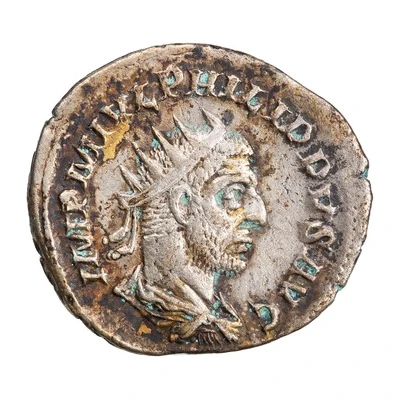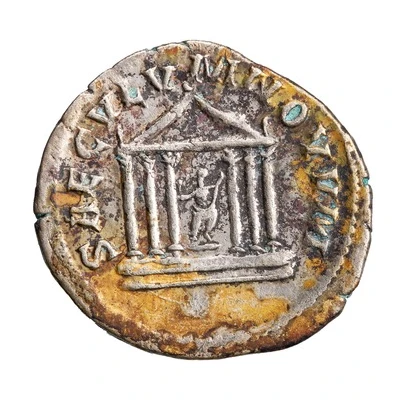


© American Numismatic Society (ANS)
Antoninianus - Philippus I SAECVLVM NOVVM; Roma
| Silver | 4.1 g | 22.5 mm |
| Issuer | Rome › Roman Empire (27 BC - 395 AD) |
|---|---|
| Emperor | Philip I (Marcus Iulius Philippus) (244-249) |
| Type | Standard circulation coin |
| Years | 244-249 |
| Value | Antoninianus (1) |
| Currency | Antoninianus, Reform of Caracalla (AD 215 – 301) |
| Composition | Silver |
| Weight | 4.1 g |
| Diameter | 22.5 mm |
| Shape | Round (irregular) |
| Technique | Hammered |
| Demonetized | Yes |
| Updated | 2024-10-05 |
| Numista | N#282170 |
|---|---|
| Rarity index | 94% |
Reverse
Hexastyle temple with statue of Roma in centre.
Script: Latin
Lettering: SAECVLVM NOVVM
Translation:
Saeculum Novum.
New century.
Comment
Mass varies: 3.23–4.77 g;Diameter varies: 22–23.3 mm;
Example of this type:
American Numismatic Society (ANS)
Source:
Online Coins of the Roman Empire (OCRE)
Interesting fact
One interesting fact about the Antoninianus coin is that it was introduced by the Roman Emperor Philip I (also known as Philippus Arabs) in 244 AD, as a replacement for the denarius, which had been the standard Roman currency for centuries. The Antoninianus was made of silver and had a higher value than the denarius, with a weight of 4.1 grams. This change in currency was significant because it marked a shift in the Roman Empire's economy, as it was the first time a new coin had been introduced as the standard currency in over 400 years. Additionally, the Antoninianus was issued in large quantities and was widely used throughout the empire, making it a common find for collectors today.